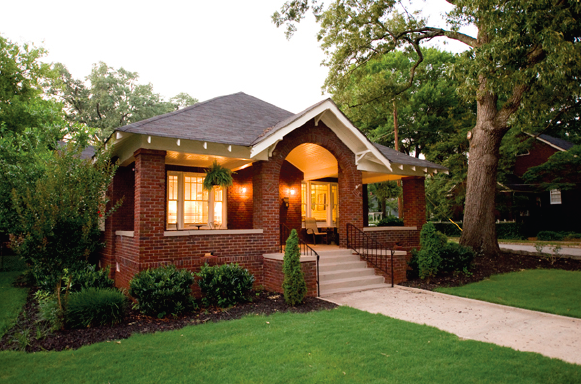 Denver real estate market is strong and hot like a cup of coffee. After years of waiting for home prices to rise, the Denver real estate market is elevated. So why are buyers and sellers so hesitant to make their move? Let’s blame it on the media. Screaming headlines make money when the sky is falling.
Denver real estate market is strong and hot like a cup of coffee. After years of waiting for home prices to rise, the Denver real estate market is elevated. So why are buyers and sellers so hesitant to make their move? Let’s blame it on the media. Screaming headlines make money when the sky is falling.
For those of you who are considering buying or selling a property, understanding the big picture is critical. So let’s take a look at where in the real estate cycle the Denver market stands.
You may think this tremendous seller’s market and super tight inventory is something new, something that’s going to come to a head and suddenly erupt overnight. Not true. We are FOUR YEARS PAST THE BOTTOM of our last real estate cycle. This is a logical continuation of a market that is reacting strongly to the overselling we saw between 2007 and 2009, and finally bottomed out in 2009. It’s doing exactly what real estate market cycles do, go up and go down over long periods of time. Remember, over the past 40 years residential real estate appreciation has averaged 6 percent per year and there is no reason to think that is going to change over the next 40 years.
If you think of market cycles in the short-term, spiking and crashing over short periods of time it’s easy to see the sweet meteor of death hurling toward your swing set, but a quick look at the last market cycle shows clearly this is not how real estate works. Real estate cycles over the past 40 years, tend to move in much broader periods, 7-10 years typically. This is why predicting short-term market movements can be very difficult, whereas assuming the market will move in 7-10 cycles is a bit more realistic.
The past four years of the upswing has been largely a sellers’ market. Plummeting inventory, rising prices, nervous buyers often involved in multiple offers, and happy sellers often getting the price they wanted. Buyers can be very nervous, reading news articles, watching TV reports, and figuring the market is teetering on the brink of a crash and being afraid to buy. Rents are skyrocketing, up 8 percent this year alone and renters may confuse the short-term media screeds about this tremendous market with the long-term patterns of market cycles, thinking that the minute they buy a home the market is going to crash.

I don’t see this. And unlike my clients who may buy or sell a home ever 5-10 years, I work in real estate every day. No one can predict the real estate market with 100% accuracy. I can’t, the Federal Reserve can’t, the banks with all the money can’t, no one can. But, understanding how market cycles work, and recognizing how low our current inventory is, I can say with confidence I do not see any impending weakness in the market over the next couple of years. We are four years into what will probably be a typical 7-10 year cycle of low inventory and rising prices. I can’t tell you what the Dow Jones will finish at next Monday. I can’t tell you if the Rockies will win their fifth game of the season. I can’t tell you what the weather will be on June 15th, but I can say with confidence that real estate tends to move over predictable long-term trends, and this market cycle has a long way to go.
Denver Real Estate Market Trends
By now you know the Denver real estate market has bounced back, now let’s look at it by the record-setting numbers.
At the end of 2013 there were:
7,275 homes for sale, (down 6%).
67,550 new listings came on the market for the year, (up 12%).
67,429 homes went under contract (↑20%)
54,024 homes closed (up 17%)
The average days on market was 58 days (↓25%)
Average sold price was $306,910 (↑10%) and closed dollar volume was $16.6 Billion (↑29%). If this sounds like Realtor crack, it is.

But what does it mean for you?
1. Did ya take a look at that map? Go ahead, click on it. Remember when there was a whole lot of pink and red, lots of yellow…? I do. Now the map is predominantly green and the key shows you how much each neighborhood has improved over last year.
(If you’d like more detail about your own neighborhood, shoot me an email.)
Metrolist expert Gary Bauer observes it this way:
The inventory of active listings, homes available for sale, started a downward trend in 2011, which continued through 2013. In March, 2013, the inventory of active listings was 6,682 homes, an all time low. Active Listings continues to be a primary sustainability concern for the home market.
Home affordability declined due to median home price increases. The month’s supply of inventory started and finished the year at 2 months.
Once again, rental rates continue an upward trend and rental availability continues to decline. With declining distressed properties, foreclosures and REO, at less than 10% of the market and low active listings, new home builders will again be an alternate in the housing market. The largest number of Single Family and Condo properties sold in price range of $100,000 to $499,999 for 2013. The largest number of Single Family homes sold in the price range of $200,000 to $299,999. The largest number of Condo homes sold in the price range of $100,000 to $199,999.
Million dollar plus homes closed/sold were up 16% when comparing 2013 versus 2012. Million dollar plus home closings accounted for $1.5 Billion of the $16.6 Billion total 2013 volume.
Mortgage interest rates started to increase and then fluctuated downward to later increase again during the year, with an overall increase of approximately 1%.
And that’s good news for all of us!
Housing Market Predicted to Rise in 2014

The National Association of Realtors just wrapped up their 2013 Conference & Expo. Chief economist for the organization, Lawrence Yun offered his insight on what to expect for the 2014 housing market: steadiness in existing-home sales over the next year as prices continue to ascend.
Based on what has happened in 2013, Yun says he expects existing-home sales to be up about 10 percent in 2013 to 5.13 million and that 2014 will hold fairly even at about 5.12 million.
We in the Denver housing market, predict continued growth in the number of homes sold, with the accelerated appreciation of 2013 to level out in ’14 to around 4 percent.
National median existing-home prices should end this year about 11% higher than 2012, while next year’s growth is expected to nearly half of that. Those who’ve been following the return of the housing market know that the past two years have shown a 20% cumulative increase in existing-home sales with prices rising an average of 18%. Incomes have not kept pace, rising between 2-4% in the same period.
“We’ve come off of record high housing affordability conditions in the past year, and are now at a five-year low, but conditions are still the fifth best in the past 40 years,” Yun said, noting that the median-income family should still be “well-positioned” to buy a home in 2014 in many areas.
Affordability, limited inventory (especially in metro Denver), stringent mortgage standards and rising interest rates will all factor into the expected gains over the coming year. Housing starts are predicted to fall short of the underlying demand, while sales of new homes are expected to total 429,000 in 2013 and 508,000 next year.
Based on Lawrence Yun’s forecasts,the top 10 markets to watch for a housing turn around in 2014 are Salt Lake City, Utah; Naples and Tampa, Florida; Atlanta, Georgia; Boise, Idaho; Houston, Texas; Charlotte, North Carolina; Denver, Colorado; Seattle, Washington; and Tucson, Arizona.
Sitting in a real estate marketing seminar in a downtown Denver hotel, fluorescent lighting, those stiff, stacking chairs…The peppy presenter popped off a proposition. “What if you are more than their agent? What if you become their ‘Realtor for Life’? Still new to the whole real estate thing, I pondered this process and then…
I met Kelly on a late summer Denver day. We discovered, as we played in the park, that her eldest daughter would be joining my first son at an elementary school come fall. What we didn’t know was that we’d spend our lives together.
Then I met Felipe. He was Kelly’s husband. Of an autumn afternoon at the schoolyard, we chatted to the strains of swings on metal. He learned I was in real estate, I learned he was a hairdresser. We met a few weeks later to talk about selling their rental property, which I did. It was my first listing appointment, and he became my hairstylist.
The kids moved up a grade or two, we’d had some backyard barbecues, another child was born… ya know… life. I was offered a seat at their kitchen table. It was time to move along down romance road, time to sell the family home. Which I did.
Felipe met Molly. Molly need to sell her home. So I did. Kelly moved in to a rental, Molly and Felipe moved into a rental. We changed schools, I changed hairdressers—not for any particular reason, just because that’s what women do— we exchanged numbers and kept in contact. No… we kept in touch.
And where were we then, a pool, maybe? I remember Kelly in the sunshine, loading the kids into the van and waving from the carpool lane. “Call me” she motioned. And I did. It was time to buy a place of her own, where she could build a home and some equity. We found it.
Then Kelly met Matt. He was a software developer and you could see by the look in her eyes that something extraordinary was developing. (You know what’s coming don’t you?) They weren’t really looking when the called me, but they saw this home…  She has her three, Matt has two of his own, so it had to be roomy. And special. And it is.
She has her three, Matt has two of his own, so it had to be roomy. And special. And it is.
So special, in fact, that they got married on the steps of their City Park South home and threw a block party reception that people are still talking about! The evening was magical; Matt and Kelly dancing in the marquee-lit street to the Trubelos, the young ones are rapt by the aerial ballet, the teenagers wrapped in one another, and the Governor chatting with the townsfolk.
Sitting at a table, Molly and Felipe hold hands as he catches up with his past life and the people who people it. Three days later we closed on their new home together.
Ah, you can’t beat love.
Color Me (Re)Blue
 One of my favorite things about being in real estate is looking at houses. I’m mad about architecture, color, design, shape and style. I love staging that brings out the best features in the home while keeping it homey. Watching home improvement shows, HGTV, and all that real estate porn… I must admit, excites me. And when January rolls around and the color wizards announce the nominees, I feel as dizzy as an ingenue on Oscar morning.
One of my favorite things about being in real estate is looking at houses. I’m mad about architecture, color, design, shape and style. I love staging that brings out the best features in the home while keeping it homey. Watching home improvement shows, HGTV, and all that real estate porn… I must admit, excites me. And when January rolls around and the color wizards announce the nominees, I feel as dizzy as an ingenue on Oscar morning.
On any given power-shopping Saturday, I can take buyers to look at five to fifteen properties. After house number 10, you’re beginning to feel a sense of overwhelm and the ‘buyer’s blur’, as each house starts to blend into the next. As the day progresses, the copious notes you started out taking become chicken scratches or a simple “NO!” until you get to my favorite place… walk in, walk out.
At the beginning of a house hunt, we feel the need to take the time to visualize ourselves in the home, our colors on the wall and grandma’s hutch in the dining room. Once you get the “Blur” it’s like triage, you identify what’s wrong quickly and assess if you can fix it or if you have to move on.
So sellers, what is it that buyers are responding to? First off I’d say CLEAN. And I mean clean to the point that a team of pros came in and scrubbed every corner with a toothbrush! Even an old house will look new when it’s sparkling clean. It inspires trust, helps us believe you’ve taken good care of your home. And by all means DECLUTTER. I know you’ve heard this before, from me and a thousand other HGTV Realtors, because we’re right. We’re the ones in the house when you’ve left for the showing and we hear EVERYTHING. When I say declutter, I don’t mean get rid of those things you’ve been planning to take to the Goodwill, I mean take all that to the Goodwill and then come home and pack up half of what you own!
Now comes the good part; UPDATE! The new 2013 colors are out and they are sensational. Spend some time browsing around to see if there’s something that speaks to you. If you’re prepping to sell (and right now you should be), look at the new neutrals, look at the latest accent colors and see if there’s something you can do to make your home feel au currant. You’re going to have to break out the paint brush, may as well add some pop! A word of caution though, if you’re not comfortable taking the lead on this bring in a color consultant or a stager for a professional eye. It can make a big difference in how much your home sells for and how quickly it sells.
The Denver market has changed. Home prices are up a stout 7% but that doesn’t mean you can just plant a sign in the yard and ask top dollar. If you want the most for your home, put the most into it. I guarantee you, that’s what your neighbor’s doing.
So… I guess it’s time to start moving on moving.
Winter Home Buying? You bet your ice skates!

After you’ve finished your holiday shopping, why don’t we go look for a house?
Winter home buying has its challenges, but winter can be the perfect time to buy a home. As we head toward the snowy months, serious shoppers know their winter home buying power is increased by determination and AWD. Housing market prediction for 2014 is looking good and buying a home this winter might just be the ultimate stocking stuffer.I love me those cold weather clients!
Most people think of buying or selling their homes in the ‘high’ season, and while the balmy days of spring and summer are perfect for cruising open houses and power shopping, they also bring the crowds. In 2013 we saw a big bump in the Denver housing market:lots of buyer activity and low inventory meant happy sellers and buyers who were frustrated by the return of the multiple offer. Even when the market was down the notion that summer is the best time to buy/sell your house is one that is hard to break. After spring break, sellers prepare to list the moment the last school bell rings pushing inventory up and in the seller’s minds prices too. Many of these listings are sellers who want to test the waters, plant a For Sale sign in their yard along with the annuals and see if they get the price they want. But this supply side increase often works in the buyers’ favor or frustrates them when the fair-weather seller lacks the motivation to agree on a fair price. Sellers feel the same when sunny day buyers, indulging in some fantasy house hunting, create lots of traffic and little else.
Cold weather buyers and sellers are serious.
The real estate market is driven by many factors but the first and most enduring one is CHANGE. One of the most enduring reasons people buy or sell a home is because their lives are in transition. Though many plan their home sale or purchase, life happens without regard to season or convenience. Families change, jobs are gained, lost or relocated, promotions happen, marriage, divorce, birth and death– all create someone with a housing need.
Shopping or selling in a Denver winter are obvious– driving in show, slipping on ice, shoveling the walkway, taking your boots on and off so you don’t track sludge into the house, fewer showings– but the buyers are BUYERS and not just lookers. Winter sellers are ready and willing to make a move, and tend to price accordingly from the start. The slower season also means that lenders, title companies and appraisers are not so swamped, smoothing out the process and lowering emotion. And of course, there are fewer people submitting offers on your dream home.
As savvy shoppers know, the post-holiday season comes with plenty of opportunities for a bargain and that includes houses as well. Though we in Denver are beyond the clearance sale in our housing market, home prices are on the rise giving sellers more leverage as well.
Enjoy the holidays, spend time with your loved ones, take a spin around town and take in the lights. Then call me when you’ve got the ornaments put away and we’ll get the ball rolling.

How would it affect you if you could no longer write off the interest you pay on your mortgage?
According to panelists at Friday’s housing forum hosted by Zillow and the University of Southern California’s Lusk Center for Real Estate:
The burgeoning federal debt makes it unlikely that the mortgage interest tax deduction will survive in its present form. Of course, any proposed changes to the tax break for homeowners will spark a fierce debate over the fundamentals of the U.S. housing market, the value of home ownership, and consumer behavior.
“Fierce debate” he says? I’d call it a jobs-killer! But then again, I’m in real estate. Change is never easy, but when it hits our pocketbooks and the government, it really hits home. I advise my clients to educate themselves, talk to their tax professional and view the tax benefits icing on the cake. Knowing the long-term financial upside leaves them feeling good and more secure as they move forward with their biggest single purchase.
“I think it’s entirely likely that something big is going to happen (with the MID) starting next year with either administration,” said Jason Gold, director and senior fellow at the Washington, D.C.-based Progressive Policy Institute, an independent think tank.
A Congressional contingent advocates for the elimination of the mortgage interest deduction to help address the nation’s debt and budget deficit. Obviously things must be done to right the problem, but sticking it to a Middle Class whose beginning to feel the effects of a post-crisis housing market recovery seems a bit harsh. At the end of this year, a series of tax increases and spending cuts are scheduled to go into effect automatically unless Congress acts to prevent or alter them. Revamping the mortgage interest deduction is on the table as a way to head off that “fiscal cliff” scenario. (I wonder how many of those guys have a mortgage.)
Two years ago, a bipartisan deficit reduction commission recommended scaling back the mortgage interest deduction, which is currently capped at mortgages worth up to $1 million for both principal and second homes and home equity debt up to $100,000 and the deduction is only for taxpayers who itemize.
The Simpson-Bowles commission proposed turning the deduction into a 12 percent non-refundable tax credit available to all taxpayers, capping eligibility to mortgages worth up to $500,000, and eliminating the deduction on interest from second homes and home equity debt.
Though that seems more reasonable to me than the first idea, the National Association of Realtors has consistently defended the mortgage interest deduction in its current form.
Highly critical of the recommendation and claiming any changes to the MID could depreciate home prices by up to 15 percent, they are promising to “remain vigilant in opposing any plan that modifies or excludes the deductibility of mortgage interest.”
So… we’re back to whose going to pay down the debt? And how.
The MID is a “tax expenditure,” meaning its cost must either be made up through higher taxes elsewhere or by adding to the debt, and it costs the government about $90 billion a year. Richard Green, the director of the USC Lusk Center for Real Estate, told forum attendees that reforming the MID is necessary for fiscal sustainability. “We need to get revenue,” Green said. “You need to make a judgment about what’s better or worse for the economy. In my opinion, it’s better to do it with tax expenditures, rather than rates, though you may have to do both to get to where we need to be.”
Because mortgage interest rates are currently so low, he added, “This may be an opportunity to do less damage by reforming the mortgage interest deduction than at other times.”
(I wonder what cuts would make this guy feel the pinch.)
The mortgage interest deduction is particularly polarizing because of the disconnect between how people use it and how it is perceived. Green gave the example of Texas where most people do not itemize their taxes (only about 30% of taxpayers do) so they cannot take advantage of the MID. This line of thought perplexes me. So… if more Texans itemized their taxes it would make things fairer? or does he mean that if they actually knew they could they would, adding to the deficit? And haven’t Texans done enough of that? 😉
No matter how the chad falls in the next three weeks, watch for ongoing and loud debates over the Mortgage Interest Deduction. *covers ears*
Source: Inman News, Andrea V. Brambila, Monday October 15, 2012
Undecided? I don’t get it.
It’s late October in a very tight presidential race. Pols shift twice in the same day and the election is coming down to swing states and undecided voters, though I’m not sure exactly who these people are. The issue is not that the Democrats and Republicans have successfully laid out their vision for the next 4 (or 8) years, because neither of them has been too clear on that, or that I don’t think it’s really important and has a profound impact on my future, because it does. I know. It does. The issue is… I can’t decide. Really?
I consider myself decisive and spontaneous in general, but I am slow and deliberate when it comes to making the big decisions, gathering all available information and trying on perspective outcomes in the dressing room of my mind. When weighing out the cost/benefit ratio of a situation, what is it that makes one finally take a stand, or take action?
The word ‘SALE’ has some power over me, at least it gets my interest. Once piqued I am swirling through the— Do I need it? Do I want it? Does it solve a problem? Is it cheap enough?— cycle until either I buy or walk away. Even when that “One Day Only!” sale fills me with a sense of urgency, I know I can always come back…like to next month’s “One Day Only!” sale.
So what about the big things? Deciding on a president or buying a house? (You knew I’d go there)
I have binders full of buyers, debating over whether or not its time to get off the fence. Right now Denver Colorado is in the top five cities leading the housing market recovery. Home prices are rising steadily, foreclosures are in decline, inventory is low, the home affordability index is high and the money’s on sale. What questions do you need to ask yourself before you take the leap?
Beyond the “One Day Only!” hype, buyers who’ve waited for the market to hit bottom (so two years ago) have a sense of urgency to make a good investment before the window of opportunity closes. With the release of pent up demand (sounds very “Fifty Shades of Grey”, doesn’t it?) sellers who’ve waited out the storm have built back some lost equity and are feeling more confident their home will fetch a fair and decent price. There are more bidding wars and high-demand neighborhoods than I’ve seen in five or six years and that feels good. The crush of summer housing sales gives way to autumn when the market slows a bit, leaving the serious buyers and sellers. Its a very efficient time for me as a real estate agent, often producing my best quarter.
I know home ownership is not for everyone, nor is real estate investing, but when you’re in an historical sweet spot to buy and hold real estate, it may be time to make a decision before you turn into a pumpkin. As for that voting thing… oh, I’m not goin’ there.
 And don’t we all need a little good news? Working in the real estate trenches I’ve been watching the steady turn around, especially evident in 2012 as the Denver real estate market took a sharp turn for the better. Today’s Denver Business Journal announced the data to back up my experience.
And don’t we all need a little good news? Working in the real estate trenches I’ve been watching the steady turn around, especially evident in 2012 as the Denver real estate market took a sharp turn for the better. Today’s Denver Business Journal announced the data to back up my experience.
Colorado’s housing market stands out as the fifth-strongest in the country, according to the website 24/7 Wall Street.
Home prices across the state have increased by an average of 7.3 percent over the past year, putting Colorado between North Dakota (7.1 percent) South Dakota (8.3 percent). The ranking was based on a review of data from various sources, including the CoreLogic Home Price Index and foreclosure reports from RealtyTrac. 24/7 Wall Street forecasts Colorado home prices will increase by 3.7 percent between the first quarter of the year and the first quarter of next year.
Good news for the Dakotas, but we get to live in Colorado! If you’d like more information about your neighborhood or how you can make this market work for you, call, text, email or comment here and we’ll talk.
“I See What You Mean” (Big Blue Bear) created by Lawrence Argent, photograph by Elizabeth Thomsen
 You may be surprised to know that in the Denver metro area, The Home Affordability Index (HAI) is at its highest recording ever. What does that mean? The HAI compares the median price of a home in the Metro Denver real estate market to the median income level, and brings the current interest rate for a 30-year fixed rate loan into the equation. As a home buyer this is good news as the median income earner can buy more house today than ever before. Why? Because home prices, while rising quickly, are still well below their peak prices of 5-6 years ago and interest rates are at never-before-seen historic lows. It is the interest rates that continue to make homes so wonderfully affordable, so let’s dig into those a bit.
You may be surprised to know that in the Denver metro area, The Home Affordability Index (HAI) is at its highest recording ever. What does that mean? The HAI compares the median price of a home in the Metro Denver real estate market to the median income level, and brings the current interest rate for a 30-year fixed rate loan into the equation. As a home buyer this is good news as the median income earner can buy more house today than ever before. Why? Because home prices, while rising quickly, are still well below their peak prices of 5-6 years ago and interest rates are at never-before-seen historic lows. It is the interest rates that continue to make homes so wonderfully affordable, so let’s dig into those a bit.
The typical rate on a 30-year fixed mortgage tumbled below 3.5% for the first time last week, the latest record low in a trend that has fired up homes sales around the country. Freddie Mac’s weekly survey of what lenders are offering to qualified borrowers showed the 30-year rate at an average of 3.49%, down from 3.53% the week before. The 15-year fixed loan fell from 2.83% to an almost unbelievable 2.8%! Let’s put this in perspective. In late July 2010 and 2011 the typical 30-year rate in the Freddie Mac survey was just over 4.5%, more than a percentage point higher than now. The 30-year rate was above 6% in 2006 and most of 2007, over 8% back in 2000, and over 10% in 1990. Back in the bad old days of inflation, the rate topped 18% in 1981. Look at how the interest payments affect your monthly Principle and Interest payments:
$200,000 property in 1981 at 18% interest: $3,014
$200,000 property in 1990 at 10% interest: $1,755
$200,000 property in 2000 at 8% interest: $1,467
$200,000 property in 2007 at 6.5% interest: $1,264
$200,000 property in 2011 at4.5% interest: $1,013
$200,000 property in 2012 at 3.5% interest: $898
But wait, there’s more! According to a recent CNN Money article the average cost of closing on a mortgage has fallen by 7.4% over the past year. At the end of June, a homebuyer looking to close on a $200,000 mortgage with 20% down paid an average of $300 less than 12 months earlier. Even if you don’t have 20% down payment saved, you can put 3.5% on an FHA mortgage. Very attractive, no?
No one knows how long these historically low rates can last. But in the meantime my clients are taking advantage of them to buy the homes of their dreams and lock in once-in-a-lifetime interest rates.




